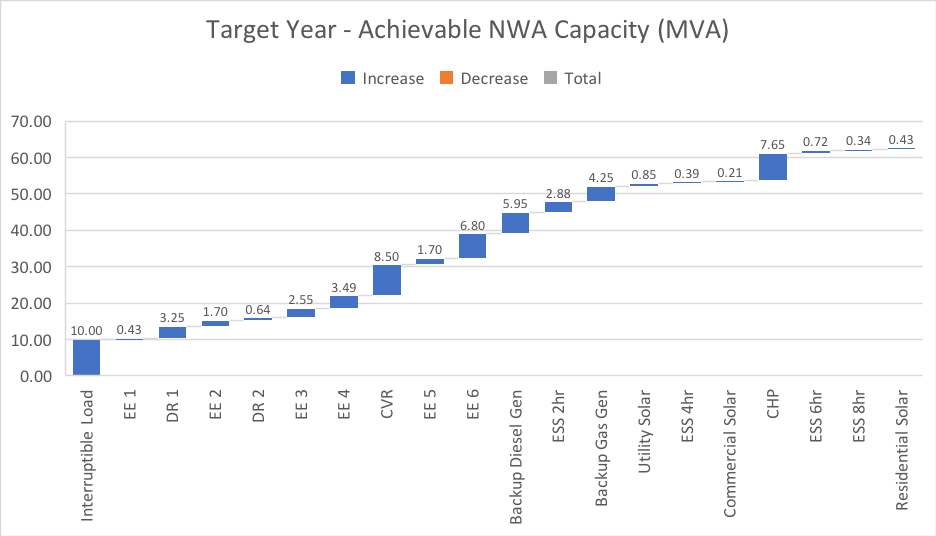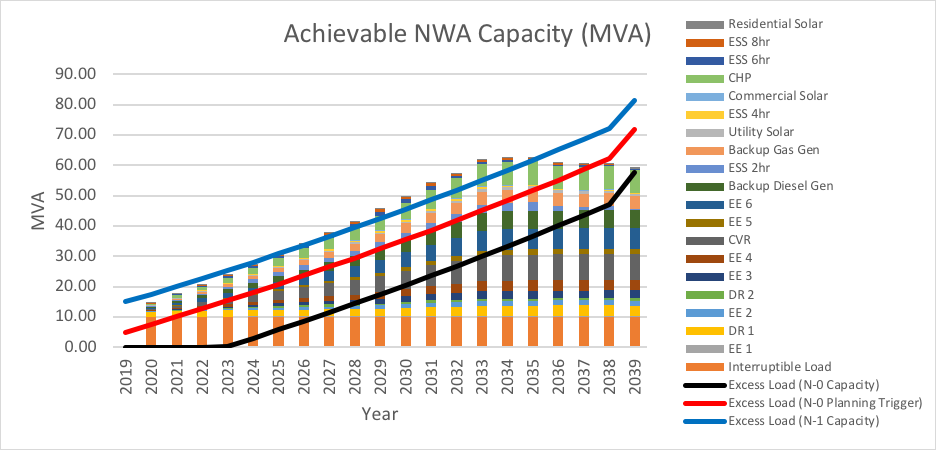Non-Wire Alternative (NWA) Solutions
The security of the transmission system and its ability to transfer power economically are often influenced by the load and generation profiles during peak flow scenarios. Traditionally, transmission solutions such as substation and line upgrades are proposed to restore system security and increase its transfer capability. However, increasingly, the array of solutions is expanding beyond the traditional to include several non-wire solutions (NWS) including energy storage, demand response, energy efficiency, and even renewable generation assets.
Planning these NWS is not as straightforward as the traditional solutions. For one, the familiar and trusted engineering analysis tools of power flow and security analysis are not equipped to perform the necessary investigations of siting and sizing these NWS. At the same time, using one or multiple snap shots of system models at peak or off-peak times is not adequate to perform the requisite analysis. Key challenges in planning the transmission system using NWS are illustrated below:
| Energy Storage | Sizing the power rating can often be performed using a security analysis program. However, due to the limited-energy nature of energy storage, it requires recharging to be positioned to support the grid at next upcoming peak, which in turn depends on the grid’s ability to provide the requisite recharging without violating grid security. A time-series hourly power flow analysis is required, using hourly load profiles and generation dispatch, to determine the energy rating of storage systems. |
| Renewable Resources | Solar and wind can provide a local source of energy that reduces the need for imports and thus relieve transmission security concerns. However, the intermittency of these resources dictates careful analysis to ensure the right level of generation will actually be available when it is needed. Statistical analysis of the Net Load at the sub-hourly levels is required to determine the grid benefit ratio of these renewable resources. |
| Demand Response | Demand Response (DR) is an accepted resource to meet system or local resource adequacy requirements. However, to rely on DR for transmission security, an assurance is required of the availability and controllability of these DR resources whenever system security concerns arise. As DR programs are often structured to provide a limited number of strikes (or calls or events) after a notice period, the priority of using these resources among other available resources is critical. |
Operating the NWS requires active management and control unlike the passive nature of the traditional wires solutions. Designing the associated control systems requires proper selection of measurement signals, power and voltage setting points, and other dynamic control parameters to ensure smooth and consistent operation only when required.

And finally, selecting the optimal portfolio of NWS is important to ensure prudent and lowest cost investment. The cost structure and useful lives of NWS technologies differ and thus a consistent financial analysis is required to design an optimal portfolio.

